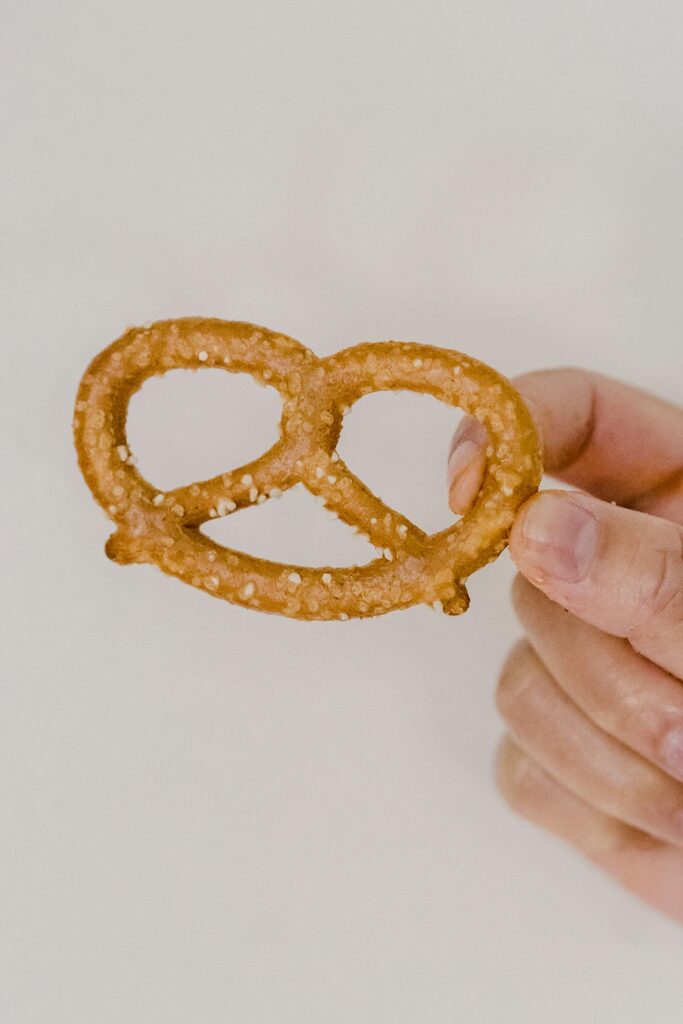German Food To Try On Your Next Date
Americans love German food, though they may not even realize they are eating it. German Americans have impacted the American food scene since they began immigrating here in earnest in the early 1800s. While most Germans settled in Pennsylvania and the Midwest, they also settled in many areas throughout the US and brought their culinary traditions with them.
Whether it’s for a date night at home or as part of the Alphabet Dating Challenge with date ideas that start with G, German food is a delicious type of cuisine that can lighten up your dinner date.
German influence on food culture is nationwide but also beyond America. From Bratwurst found at a local grocery store to German food restaurants, German food is a part of the American but also part of the British food culture.
Consider the wide-spread availability of delicatessens with a large variety of meats and cheeses, certain breads, and even breweries that have given us a vibrant beer culture in many areas. Every grocery store carries at least one type of sauerkraut, and most kids are pretty familiar with having pretzels for snacks. All these things are of German origin and have been seamlessly integrated into American food culture.
Here are some German food recipes you can make together to discover a new cuisine during date night along with some cultural facts about the influence of German food.

Popular German Recipes
First and foremost, recipes tried at home should be recipes the whole family will love. Try comfort-style German food that satisfies both body and soul. Start with simple ingredients in the right combinations to create unforgettable German meals.
German Potato Pancakes
German potato pancakes are known in German as “Kartoffelpuffer” or “Reibekuchen.” These delicious pancakes are traditionally made using grated potatoes with eggs, flour, onions, and seasonings. These are most often enjoyed as a side dish to a meat-based main course but can certainly be enjoyed independently.
Making them involves grating potatoes and squeezing out excess moisture using cheesecloth or a clean kitchen towel. Once most of the water is gone, mix with the eggs, flour, and other ingredients in a mixing bowl. Form them into flat patties and fry them until golden brown, much like a hash brown or latke.
Try serving them with applesauce, sour cream, smoked salmon, or plain yogurt.
Jagerschnitzel
The next dish to try is Jagerschnitzel. Jägerschnitzel is a dish made of a breaded and pan-fried pork or veal cutlet served with a rich sauce, usually a mushroom gravy.
The name means “hunter’s cutlet” and is prepared by first pounding the meat until it is thin, seasoning it with salt and pepper, dredging it in flour, dipping it into an egg wash, and finally coating it with breadcrumbs. They are then fried until golden brown.
The mushroom gravy is made by sautéing sliced mushrooms, onion, and garlic with butter or oil until fragrant. Then, flour is added to make a roux, along with beef or chicken broth and seasoning.
Jägerschnitzel is typically served with a side of mashed potatoes or Spaetzle. A side salad is also a great addition.
Spaetzle
The third recipe perfect for home kitchens is Spaetzle. Spaetzle is a German egg noodle that is essentially a dumpling dough cut into tiny pieces resembling small pasta noodles.
Spaetzle is found in any German restaurant and served either plain or with melted cheese.
Spaetzle dough is made with flour, eggs, salt, and either water, milk, or sparkling water. It’s a soft, sticky dough that is either pushed through a Spaetzle press or is cut and scraped from a cutting board with a sharp knife into boiling water.
Once cooked, the Spaetzle are removed from the boiling water, drained, and served with sauce, gravy, or cheese. They go well with Jagerschnitzel.
Different recipes from different regions of Germany will use varying spices and seasonings in Spaetzle. Spaetzle can also be pan-fried after boiling to create a texture that is a bit more crispy. No matter which way you make them, they will be delicious.
These three recipes are a good introduction to German cooking. The ingredients are simple and flavorful, and the cooking process is straightforward and easy to master. They are recipes that both kids and adults will enjoy and can be paired with many different dishes.
Key German Contributions to American Cuisine
While some German culinary influences are easy to spot, such as Bratwurst, there are some key contributions that Germans have made to American cuisine that we can’t ignore – namely, frankfurters, German beers, pretzels, stollen, rye bread, and more.
Some lesser-known contributions exist that most people learn about only in German restaurants. Dishes like Spaetzle (a dumpling-style noodle) or Käse Spätzle (a dish almost equivalent to mac and cheese with softer dumpling-style noodles) are classic German restaurant dishes.
- Germans introduced new ingredients and cooking techniques as they immigrated to the United States. German immigrants’ culinary contributions include sausages, meats, and brewing methods.
- German businesses also helped form the culinary environment by opening delicatessens, bakeries, and breweries. Delis offered meats and cheeses that transformed how Americans ate and still eat today.
- Different areas of the US experienced a higher influx of Germans than others, creating regions of the country where traditional German foods became both well-preserved and the American norm.
- Adaptation of German food became almost immediate, with American versions of German dishes springing up nationwide over time. Americanized sausages, pretzels, schnitzels, and German pastries became a fundamental part of the American culinary tapestry and will remain so.
Cooking Techniques and Innovations
Germans contributed specific cooking methods to American cuisine. Among them were their methods for sausage making, smoking meats, pickling vegetables (specifically cabbage for sauerkraut), curing meats, and baking techniques such as bread-making (specifically rye bread) and some methods for making sourdough bread, as well as Spaetzle making.
Top Regions Of Influence
While people can find German restaurants almost anywhere, some areas of the country were profoundly affected by mass German immigration.
Pennsylvania Dutch Country has a large Amish and Mennonite population. They have preserved the traditional German recipes and cooking methods for foods such as Schnitz und Knepp, a dish of dried apples cooked in a ham gravy with dumplings.
The midwestern states, such as Wisconsin, Illinois, and Minnesota, also have significant German culinary influences. There was a substantial German immigrant influx to the area in the 19th century. Germans gifted this area with German-style beer, sausages, and cheese-making traditions. To this day, you will find beer gardens, Oktoberfest celebrations, and German eateries throughout this region.
Texan Hill Country also saw an influx of German immigrants and settlers.
They settled into an area that became known as the German Belt. It was an area of land that stretched from the hill country to the coastal plain. This area saw contributions that included pretzels, sausages, beer, and strudels.
Ohio has a unique German influence, as seen in the creation of Cincinnati chili. A heavily spiced chili served over spaghetti or hot dogs. The roots of this dish are German. Of course, Germans also bestowed their beer-making processes on this area as well.
The Pacific Northwest saw German immigrants populate areas such as Portland and Seattle, where breweries with German-style beers sprung up, and bakeries began offering traditional German pastries such as pretzels and strudels.
German Food-Focused Celebrations That Are Well Integrated Into American Culture
Some celebrations are now also a part of American culture.
- First celebrated in Munich, Germany, Oktoberfest began in 1810. Today, you can find multiple Octoberfest celebrations around America honoring traditional German foods such as sausages, pretzels, and beer served alongside German music, dancing, and artful performances.
- German-American Festivals celebrate the German culture and heritage. They are found in many states, with one of the more popular festivals being the Steuben Parade in New York City, which celebrates German-American military contributions. These festivals offer plenty of German food, music, and entertainment.
- German Wine And Beer Festivals are another way German heritage and contributions are celebrated here in the States. They commemorate the old brewing and winemaking traditions that have brought today’s beers and wine to their current status worldwide.
Bringing German Cuisine Into The Home Kitchen
Many people don’t realize that enjoying Germany’s rich, hearty, and flavorful foods isn’t something only restaurant patrons can experience. German foods are easily made and enjoyed in any home kitchen.
German cooking isn’t complicated and, generally speaking, doesn’t include a lot of hard-to-find ingredients. Most German cuisine features easy-to-find herbs, spices, and other ingredients available at any local grocery store. From cabbage to caraway seeds, local stores will most likely have everything needed.
German Cuisine Integration: It’s Here to Stay
German immigrants have had a considerable impact on the culinary atmosphere of America. They have contributed undeniable deliciousness to America’s sometimes muddled cuisine. German influence can be seen throughout this country and is enjoyed as part of the everyday cuisine of the average American cook.
The lasting impact of German immigration on the culinary forefront is unlikely to disappear as many of these contributions have taken on a life of their own within American borders.
The rich tapestry of American food has genuinely been enhanced and improved by the addition of German influences, and nowhere is this as impactful as the foods we cook at home.
This article originally appeared on Pink When.
— SAVE THIS POST —
Did you like this post? If you liked this post, don’t hesitate to share it!
Want to save this post? You can pin the following images on pinterest to save this post.
Maike Corbett (Guest Author)
Maike Corbett is an American food blogger and founder ofCheerful Cook, a popular website featuring comfort food recipes from the US and Germany. She has been featured in numerous media outlets, including the AP Wire and MSN.
